Cardston, Alberta 作者: 来源: 发布时间:2021-07-21
I.Population and Area
₋Area
Land: 8.59 km2 (3.32 sq mi)
₋Population (2016)
Total: 3,585
Density: 417.5/km2 (1,081/sq mi)
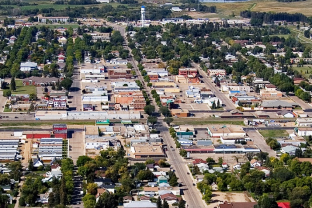
II.Natural Geography
₋Cardston is a town in Alberta, Canada. The land on which Cardston was founded was originally inha bited by the Niitsitapi (Blackfoot) people of Kainai but was not considered part of Blackfoot Territory by the Government of Canada in the Treaty 7 agreement of 1877. Cardston was settled in 1887 by members of The Church of Jesus Christ of Latter-day Saints who travelled from Utah, via the Macleod-Benton Trail, to Alberta in one of the century's last wagon migrations. The founder of the town was Charles Ora Card. The combined church and school was completed by January 29 the following year after their arrival.
₋Cardston has been a "dry" (alcohol free) town for 115 years, and there are no licensed premises in which to use video lottery terminals.
₋Cardston is situated in the foothills of southwest Alberta, approximately 25 km (15.53 mi) north from the American state of Montana. On its north side, it borders the Kainai Nation (Blood Tribe) Reserve, one of the largest reserves in North America. 40 km (24.85 mi) to the west of Cardston are the Rocky Mountains of Waterton Lakes National Park. Cardston is 77 km (47.85 mi) southwest of Lethbridge and 234 km (145.40 mi) south of Calgary.
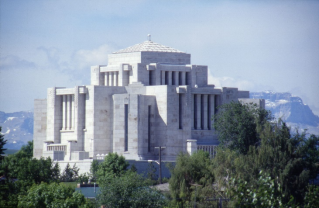
III.Economy
₋The average salary in Cardston, Alberta is C$21.25. Trends in wages decreased by -100.0 percent in Q1 2020. The cost of living in Cardston, Alberta is 100 percent higher than the national average. The most popular occupations in Cardston, Alberta are Administrative Assistant, Licensed Practical Nurse (LPN), and Medical Receptionist which pay between C$15.89 and C$32.73 per year. The most popular employer in Cardston, Alberta is Blood Tribe Department of Health Inc..
₋Website: https://www.payscale.com/research/CA/Location=Cardston-Alberta/Salary
IV.Industrial Characteristics
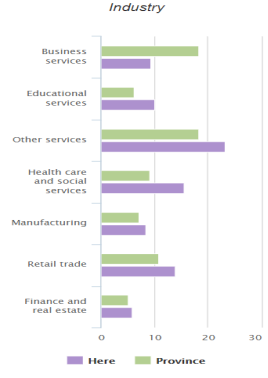
₋Website: http://www.city-data.com/canada/Cardston-Town.html
V.Attractions
1.Remington Carriage Museum
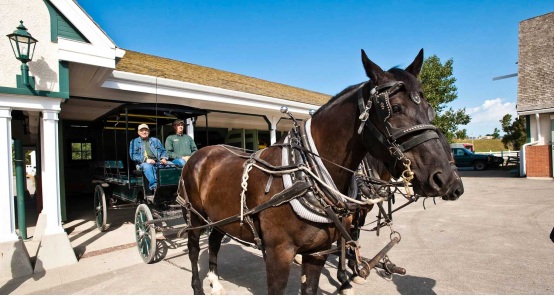
₋The Remington Carriage Museum is located in Cardston, Alberta, Canada. Opened in 1993, and the largest of its kind in the world, the Remington Carriage Museum displays more than 240 carriages.
₋Rated "The Best Indoor Attraction in Canada" four times by Attractions Canada, the 64,000 sq ft (5,900 m2). museum has a working stable, carriage rides, video displays, wedding rooms, an 80-seat theatre, Victorian gift shop and restaurant.
₋The main exhibit gallery at the museum is arranged in a series of vignettes. Each tells a story of late 19th and early 20th century North American society and the horse-drawn vehicles that were used. In each area, the coaches carts and sleighs displayed are accompanied by panels providing information with hundreds of archival photographs.
₋In the Carriage Preservation Workshop, the public is invited to watch expert technicians carry out the art of blacksmithing, wheelwrighting, woodworking, metalworking and finishing.
₋An elegant outdoor equestrian eventing program is also featured at the museum.
₋Address: 623 Main St, Cardston, AB T0K 0K0
₋Phone: (403) 653-5139
₋Website: http://remingtoncarriagemuseum.ca/
2.Cardston Alberta Temple
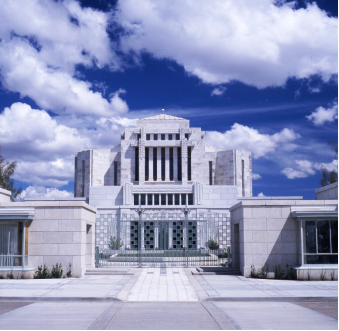
₋The Cardston Alberta Temple (formerly the Alberta Temple) is the eighth constructed and sixth of the still-operating temples of The Church of Jesus Christ of Latter-day Saints (LDS Church). Located in Cardston, Alberta, it is the oldest LDS Church temple outside the United States. It is one of eight temples that do not have an angel Moroni statue, and one of six without spires, similar to Solomon's Temple. It is also one of only two LDS Church temples built in the shape of a cross, the other being the Laie Hawaii Temple.
₋The temple was announced on June 27, 1913, and was built on Temple Hill, an eight-acre plot given to the church by Charles Ora Card. The site expanded to more than 10 acres (4.0 ha) in the mid-1950s. The granite used in building the temple was hand-hewn from quarries in Nelson, British Columbia.
₋Originally dedicated on August 26, 1923, by LDS Church president Heber J. Grant, an addition was rededicated on July 2, 1962 by Hugh B. Brown. The first temple president was Edward J. Wood, who served from 1923 to 1948. The temple was renovated in the 1990s, and Gordon B. Hinckley rededicated it on June 22, 1991.
₋The temple has four ordinance rooms, five sealing rooms, and a floor area of 88,562 square feet (8,227.7 m2).
₋In 1992, the temple was declared a National Historic Site, and a plaque was dedicated in 1995.
₋In 2020, the Cardston Alberta Temple was closed in response to the coronavirus pandemic.
3.Woolford Provincial Park
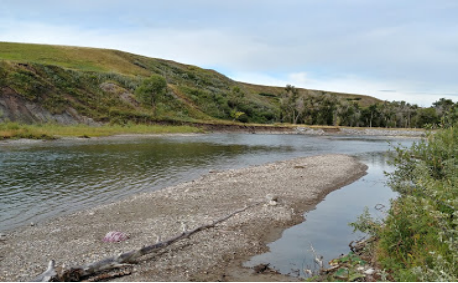
₋Woolford Provincial Park is a provincial park in Alberta, Canada, located 17.5 km (10.9 mi) east of Cardston, west of Highway 503. This provincial park is situated along St. Mary River at an elevation of 1,130 m (3,710 ft) and has a surface of 0.4 km2 (0.15 sq mi). It lies to the northeast from Waterton Lakes National Park.
₋Address: Township Rd 30A, Lethbridge, AB T1H 0H5
₋Phone: (403) 382-4097
₋Website: https://www.albertaparks.ca/parks/south/woolford-pp/information-facilities/camping/woolford/
VI.History
₋The town of Cardston was the first of what would become several Mormon settlements in Southern Alberta, Canada. Its colonizer, Charles O. Card, came seeking refuge from prosecution in the U.S. due to his practice of plural marriage. On President John Taylor's advice, he went first to British Columbia in search of friendlier territory. There, he found nothing available that was to his liking. Hearing from a mountaineer of the “buffalo plains” of Alberta, he reportedly said to his traveling companions, “If the buffalo can live there, we can. Let us go and see it.”
₋In late October 1886, Charles selected the site of the future town of Cardston at Lee’s Creek, and by late the next spring his wife Zina and several other families had arrived at the new settlement. Charles set to work building the town that would soon bear his name, establishing a Sunday School within a few weeks and opening a general store.
₋During its first few years, Cardston’s population grew gradually as other polygamist families sought refuge in Canada. By the time the LDS practice of plural marriage officially ended in 1890, land shortages in Utah and Idaho were driving young farmers north to seek a living in Alberta, where a $10 entry fee and cultivation of the land was enough to secure a homestead.
₋As Charles Card’s health began to decline, he invited Edward J. Wood, recently returned from a mission in Samoa, to assume management of his store. Wood agreed and arrived in Alberta in 1901. Wood was not only called upon to fill Card’s shoes as a business leader, but as an ecclesiastical leader as well. In 1903 he was called to serve as president of the Cardston Stake, an office he held for thirty-nine years. Among other things he oversaw the construction of the first Cardston Tabernacle from 1904 to 1912.
₋Cardston’s population continued to grow gradually, and by 1906 the town was home to a thousand people. In 1913, the dreams of many of the early Alberta pioneers were fulfilled when President Joseph F. Smith announced that a temple would be built in Cardston. The temple would be the first outside of the United States and notable for its modern design and lack of a large assembly room. Ground was broken on November 9, 1913, and construction continued intermittently for ten years. The edifice was finally dedicated by President Heber J. Grant on August 26, 1923. When the temple was completed, Wood was called as its first president, serving from 1923 until 1942.
₋Cardston today is home to more than 3,500 people and is still a predominantly LDS farming town. There are two Cardston LDS stakes encompassing sixteen area wards, and the temple continues to serve the large Latter-day Saint population in the region.
₋Website: https://history.churchofjesuschrist.org/place/cardston-alberta-canada?lang=eng
VII.Other Information
₋Property Assessment
₋Property assessments in Alberta are governed by the Municipal Government Act. Your notice of Assessment is based on the valuation and physical condition of your property as of December 31 the previous year. All assessed values are completed within these guidelines to ensure fairness and equity using mass appraisal techniques.
₋The purpose of assessment is not to reflect a single sale price, but to assess all properties at typical market value on the same valuation date so that taxation is fairly and uniformly shared. The Town of Cardston has contracted a qualified accredited assessor who performs this function based on provincial legislation and regulations.
VIII.Contact Information
₋Government
Mayor: Maggie Kronen
Governing body: Cardston Town Council
₋City Hall
Address: 67 3 Ave W, Cardston, AB T0K 0K0
Phone: (403) 653-3366
₋Website: http://www.cardston.ca/
